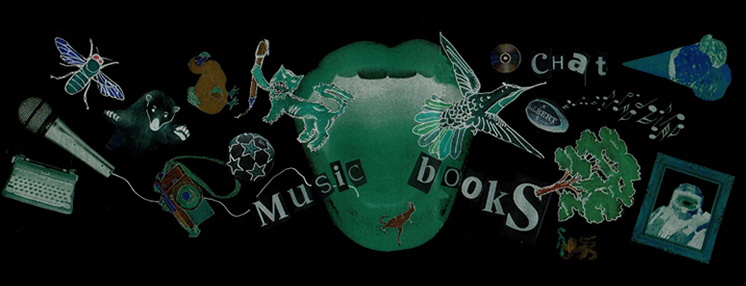by Sophia Rafferty.
This winter most of you will have shelled out on a winter coat. Some of you may have coats with fur trims, or winter boots made from suede or leather, and I’m sure most of you will own a woollen jumper. Did you ever think about what happens in the making of these items?
In the winter season many clothing retailers will be selling clothes with fur trims. Fur is often marketed as a symbol of elegance and wealth. Animal fur is obtained by removing the skin and coat of animals such as foxes, rabbits, raccoons, minks, lynxes, beavers, otters, and others. Most of the world’s fur comes from China, where cats and dogs are routinely used for fur and deliberately falsely labelled, so there is no way you can tell that the fur you buy is not from a dog or a cat.
Animals in fur farms are kept in terrible conditions. Foxes kept for fur production are kept in 2.5 feet square cages, with up to four animals per enclosure. They spend their entire lives in these filthy wire cages, exposed to all elements and denied the most basic veterinary care. When the animals are finally put out of their misery, they are killed by suffocation, gassing and electrocution so as not to spoil their coats. These methods are not entirely effective and sometimes the animals are merely knocked out and regain full consciousness while being skinned.
Wild animals caught for fur are often left for days in steel jaw traps and die of starvation or frostbite before the trappers arrive. Others escape by chewing off their own limbs only to die of loss of blood or gangrene later on. If the animals are still alive when the trappers get to them, they are stamped, strangled or bludgeoned to death.
Leather is just as bad. Most cows reared for leather are factory farmed, living in cramped, filthy conditions, going through castration, horn clipping and tail docking (which cuts straight through the flesh and bone of the tail, as bad as cutting off a leg) with no pain relief whatsoever. Animals sent to slaughter often collapse on the way and are beaten or have chilli powder rubbed into their eyes to force them to walk. Many cows have their throats slit and are fully skinned and dismembered while completely conscious after improper stunning. Other animals such as horses, lambs, dogs and pigs are also used for leather. Leather is no friend of the environment, since it shares all the environmental destruction of the meat industry, in addition to the toxins used in tanning.
Many of us would not consider wool to be involved in cruelty, but it too contributes to the suffering. Lambs on wool farms undergo a procedure called ‘mulesing’, without pain relief. This involves removing large chunks of skin and flesh from the sheep’s backside creating scar tissue that cannot harbour fly eggs. Ironically the bleeding wounds which are left open often get flies in them before they heal (which can take months). The sheep are bred with special wrinkly skin (more skin = more wool). This excessive amount of wool can cause the sheep to die of heat exhaustion during the summer months (especially seeing as most wool is farmed in Australia). The wrinkles in the sheep’s skin can become breeding grounds for flies and the eggs laid there turn into maggots which eat the sheep alive. When the sheep stop producing enough wool they are shipped to the Middle East for slaughter. The journey can last for several months and many sheep die before they reach their destination. Around 14,500 sheep die each year on the way to the slaughterhouses. Once at the slaughterhouse, their throats are slit with no stunning and some sheep are bought and brought home live in the boots of cars, to be killed by the purchasers. The shearing itself is not humane either, and the sheep are sometimes punched in the face with the shears if they do not keep still. One eyewitness claims to have seen sheep with ‘half their face off’. Sheep do not need to be sheared, without human interference sheep would grow enough wool to keep themselves warm and no more.
As you can see the production of fur, wool and leather is inhumane to say the least, however, many shops such as Burberry continue to use fur in their designs. Anyone who is concerned about the welfare of animals should boycott them until they stop selling fur. There are many retailers which don’t use animal products in their designs; synthetic alternatives are available everywhere and in all price ranges. Designers such as Ralph Lauren and Vivienne Westwood refuse to design in fur. If you too would like to help these animals then I suggest you follow this example and stop wearing, and buying wool, fur and leather. I’m not expecting you to throw out your brand new leather trainers, but when you want some more, why not look around for stylish alternatives, you could even write to a certain brand who use animal products in their designs and ask them to provide something non-animal-based. Many people in today’s society are recognising the cruelty that goes into such products, including your favourite celebrities, for example Forrest Kline of Hellogoodbye is a vegan. (For anyone who is unsure, a vegan is someone who does not eat or use any product that comes for an animal - it’s easier than you think!)
PETA (-that’s People for the Ethical Treatment of Animals) has just started a new campaign against Mary-Kate and Ashley Olsen, (or should I say Hairy-Kate and Trashley Trollsen). The girls continue to buy and wear fur and have included it in their new fashion line The Row. By choosing not to wear or buy animal products, you are decreasing the demand for these products, which in turn reduces the supply, meaning less killing and cruelty for the animals, and everyone’s happy! (Except maybe those who make their living by the exploitation of animals. What a shame.)
For more information on cruelty to animals used in clothing visit Peta.org.uk or Peta2.com for animal friendly brands and other ways you can help animals.
WE'RE CHANGING...
Let us know what you want our new site to be like, what it should be called, what it should have on it.
Monday, 17 March 2008
Subscribe to:
Post Comments (Atom)



1 comment:
This is really good.
Well done. It's very impressive you're writing like this while still doing A levels.
Post a Comment